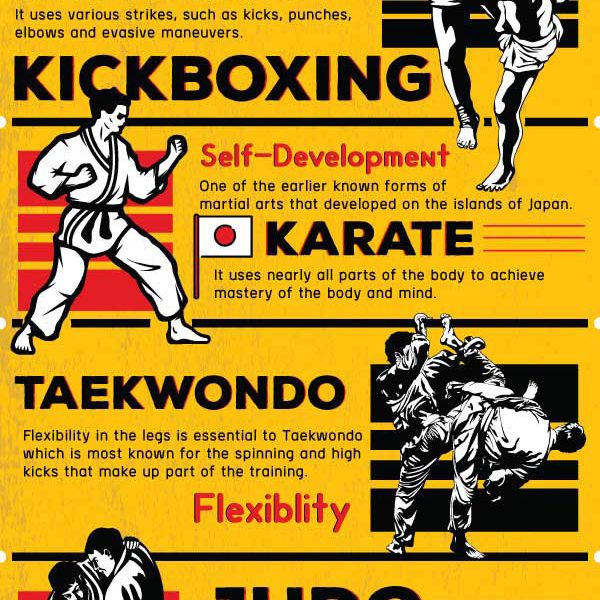Discover The Keys Behind Karate, Taekwondo, And More! Reveal The Surprise World Of Fighting Styles Styles In This Ultimate Guide
Discover The Keys Behind Karate, Taekwondo, And More! Reveal The Surprise World Of Fighting Styles Styles In This Ultimate Guide
Blog Article
Short Article Created By-Aldridge Husum
Are you tired of sensation overwhelmed by the substantial globe of martial arts? With so many styles to choose from, it can be easy to get lost in a sea of strikes, kicks, and strange names. But fear not!
This conversation will demystify the various fighting styles styles, taking you on a trip from the powerful strikes of Karate to the vibrant kicks of Taekwondo. Prepare yourself to reveal the beginnings, techniques, and ideologies behind these ancient art forms.
So, tighten your belt and prepare to start an enlightening expedition right into the exciting world of martial arts.
Origins of Martial Arts Styles
The beginnings of fighting styles styles can be mapped back to ancient people and their need for protection and combat techniques. Throughout history, different cultures developed their own distinct methods of fighting, each with its very own collection of strategies and approaches.
In China, as an example, martial arts styles such as Kung Fu and Tai Chi were established as a way of protection and improving physical and psychological wellness.
In Japan, the samurai warriors created styles like Martial arts and Judo, concentrating on self-control, accuracy, and proficiency of the body.
Likewise, in Korea, Taekwondo emerged as a martial art emphasizing high kicks, rapid motions, and psychological determination.
These very early civilizations laid the foundation for the varied range of martial arts styles that exist today, each with its own abundant background and social significance.
Techniques and Educating Techniques
To understand martial arts designs, experts should learn numerous methods and training techniques.
Methods are the specific movements and activities made use of in fight, such as strikes, kicks, throws, and blocks. Different martial arts styles have their own special collection of methods that experts need to master via strenuous training.
Training methods vary relying on the style, yet they usually involve a mix of physical conditioning, drills, sparring, and forms.
Physical conditioning is critical to develop toughness, versatility, and endurance. Drills aid practitioners improve their techniques and enhance their rate and precision.
Competing enables practitioners to practice their techniques in a managed, sensible environment. https://www.ldnews.com/story/sports/2023/08/14/joshua-aguirre-lebanons-martial-arts-prodigy-qualifies-for-aau-team/70528546007/ , likewise called kata, are deliberate series of activities that aid specialists develop muscle memory and focus.
Philosophies and Principles
Exploring the approaches and concepts of fighting styles styles can provide you with a much deeper understanding of your picked self-control. please click the next document fighting style has its very own unique philosophy and set of guiding concepts that form the method it's exercised.
As an example, Martial arts stresses self-control, respect, and self-constraint. It educates experts to focus their body and minds, allowing them to safeguard themselves while preserving a feeling of inner tranquility.
On the other hand, Taekwondo puts a strong emphasis on speed, agility, and versatility. Its concepts are rooted in the tenets of courtesy, honesty, perseverance, self-constraint, and resolute spirit.
Verdict
Now that you've discovered the beginnings, methods, and ideologies of numerous martial arts styles, you have a deeper understanding of these ancient disciplines.
Imagine a young karate student, experimenting undeviating determination and focus, breaking through boards with an effective punch.
Their journey showcases the devotion and strength needed to understand a fighting style, reminding us that with self-control and willpower, anything is feasible.
